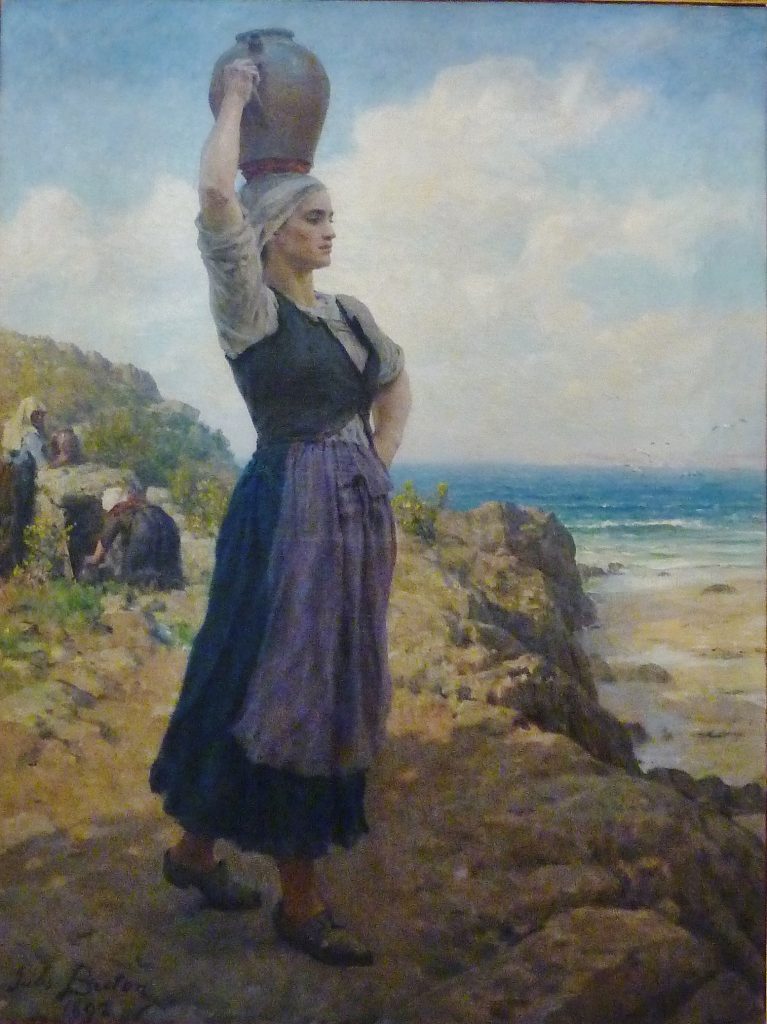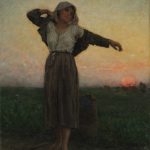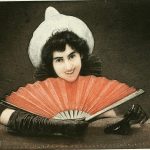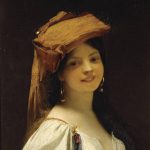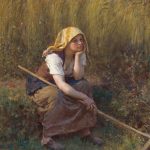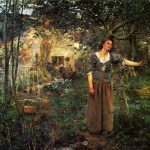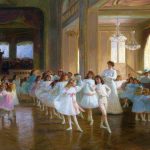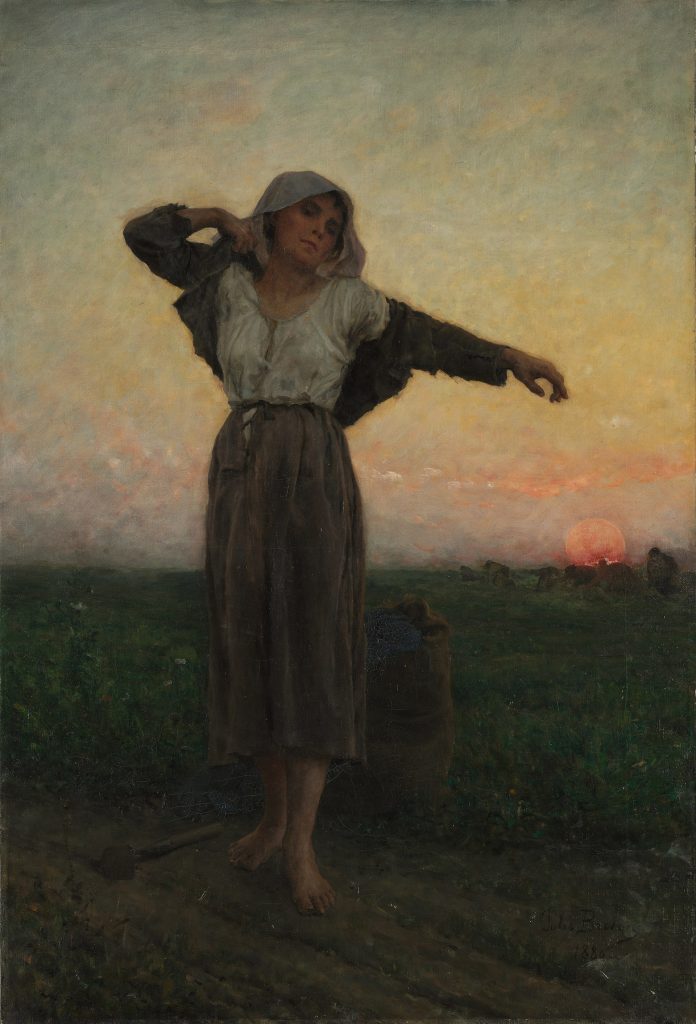
Jules Breton was a renowned French painter who lived during the 19th century. He was born on May 1, 1827, in Courrières, a small town in northern France. Breton’s work is often associated with the Realist and Naturalist movements, and he is particularly known for his depictions of rural life in France.

Breton came from a modest background, and his early life was shaped by the rustic surroundings of his hometown. He displayed an early talent for art, and his parents recognized his potential, encouraging him to pursue his passion. At the age of 12, he began studying art at a local academy, and he later moved to Ghent, Belgium, to continue his artistic education.
In 1847, Breton moved to Paris, which was the epicenter of the art world at the time. He studied under several influential artists and became associated with the Barbizon School, a group of painters who were known for their focus on rural and naturalistic themes. During this period, Breton painted scenes of peasants, laborers, and rural landscapes, often depicting the struggles and joys of rural life.
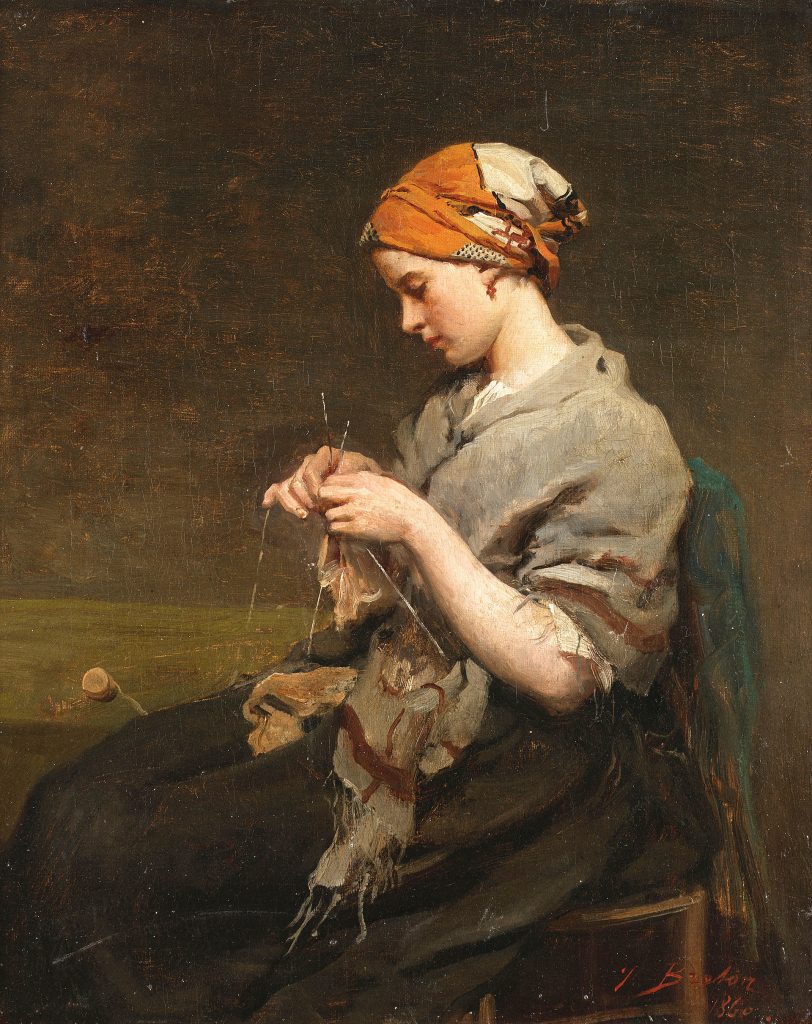
One of his most famous works, “The Gleaners,” painted in 1854, is a quintessential example of his style. This painting portrays three peasant women stooping to pick up leftover grains in a field after the harvest. It captures the dignity and hard work of rural life, making a powerful statement about the social and economic conditions of the time.
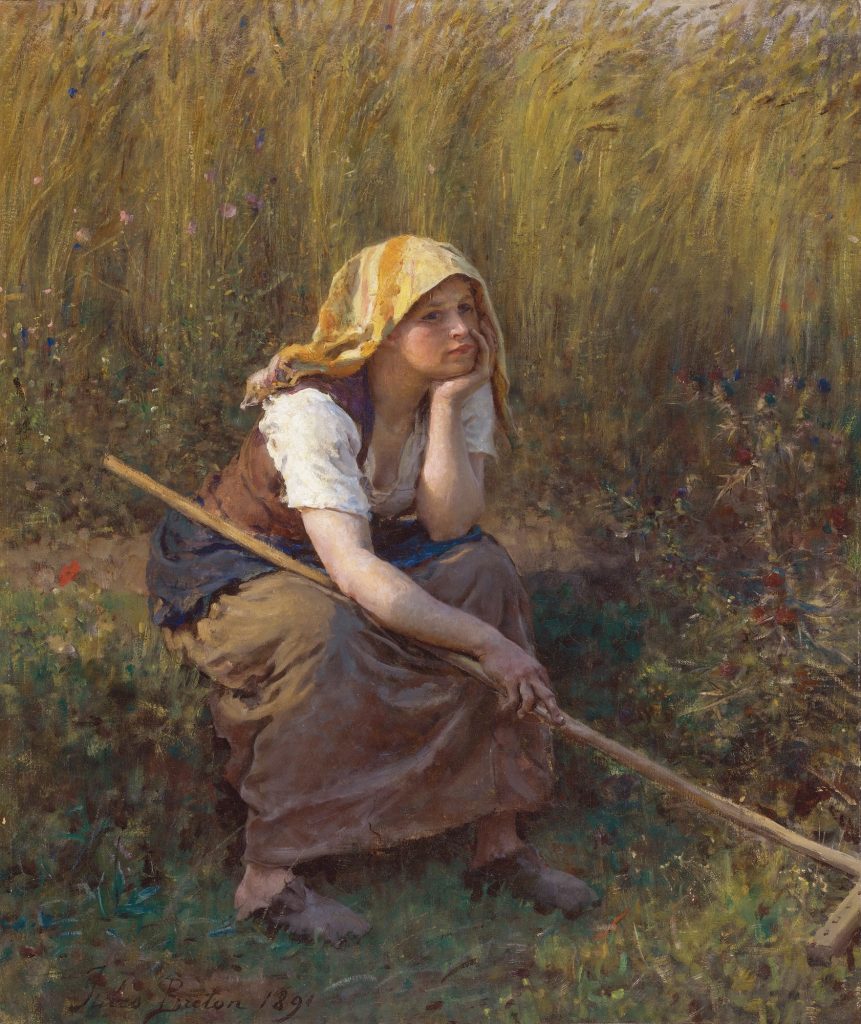
Breton’s art gained widespread recognition, and he exhibited his works at the prestigious Salon in Paris, where they received critical acclaim. He was also awarded numerous honors and medals for his contributions to the art world.
As the 19th century progressed, Breton’s work began to evolve. He moved away from strict Realism and started incorporating elements of Symbolism into his art. His later paintings often featured mystical and allegorical themes, exploring the connection between man and nature and the spiritual aspects of rural life.
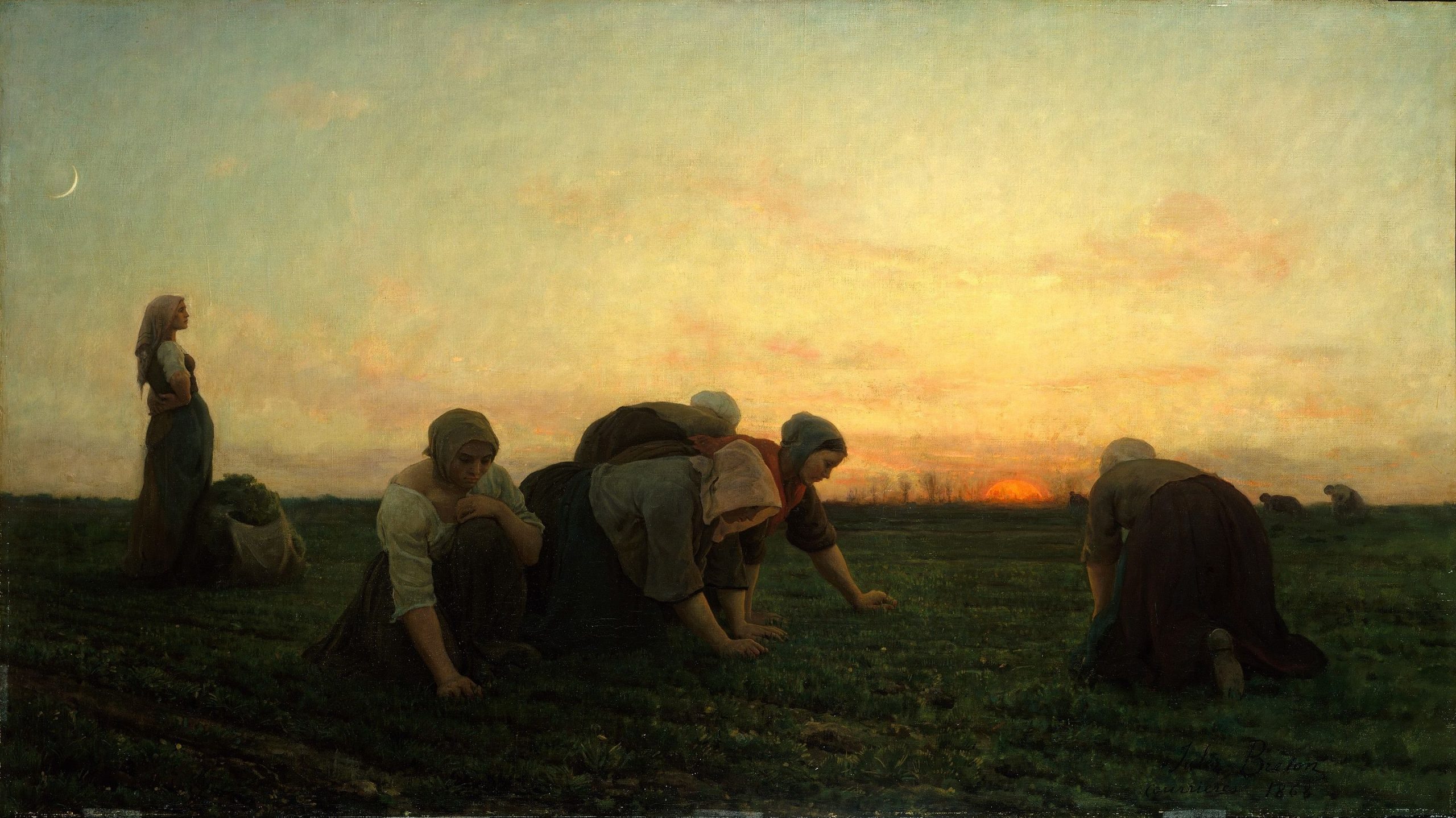
Throughout his career, Jules Breton’s art had a significant influence on the development of French art, and he remained a respected figure in the art world until his death in 1906. His legacy endures through his evocative paintings, which continue to be celebrated for their emotional depth and their portrayal of the rural world of 19th-century France.
